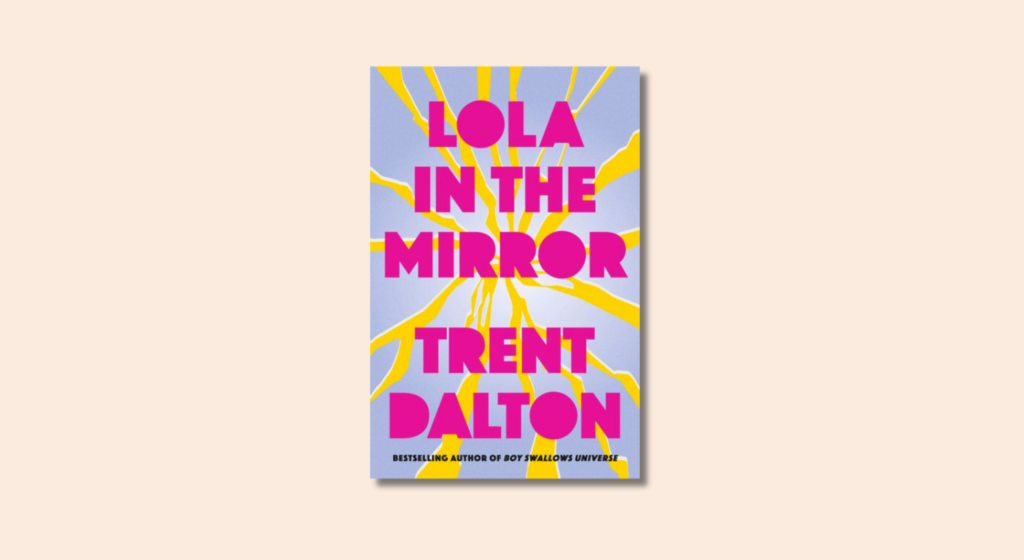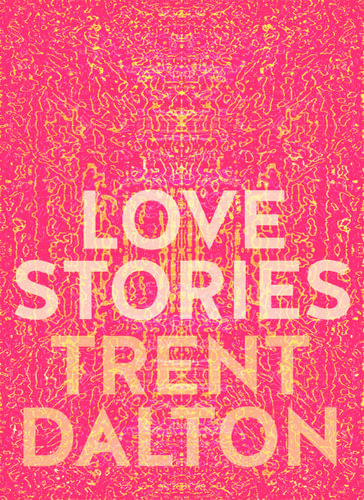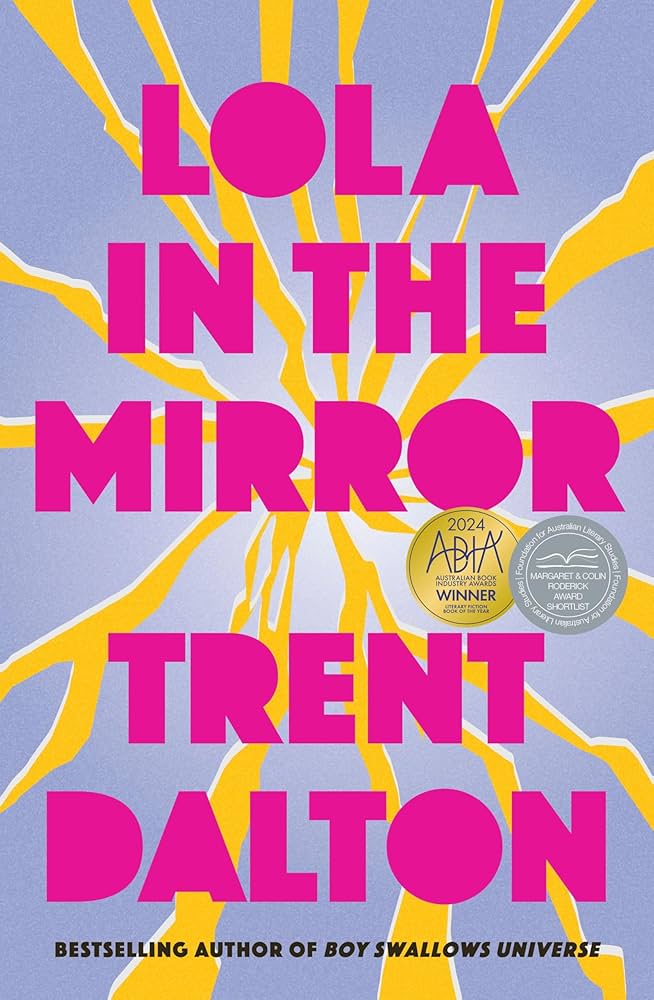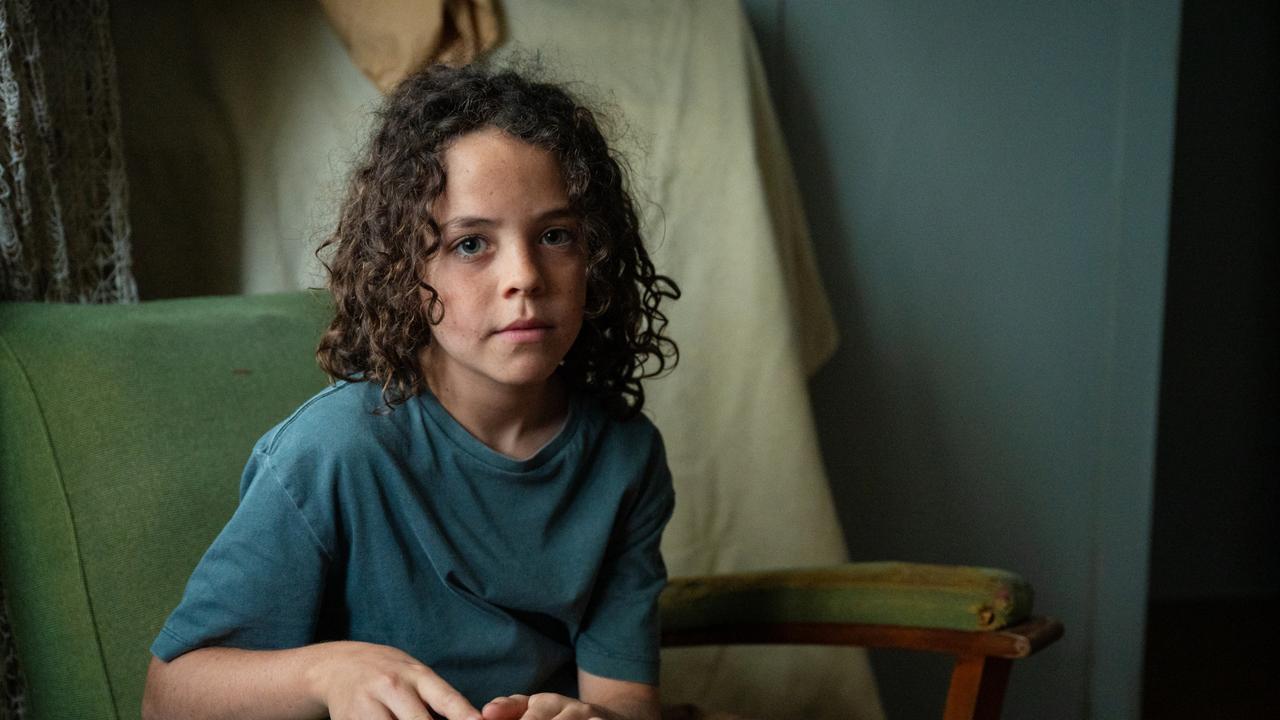If Boy Swallows Universe was about fate and family, and All Our Shimmering Skies was about resilience and wonder, then Lola in the Mirror is about survival, self-perception, and the strange alchemy that turns pain into art. It’s a novel that digs deep into what it means to see yourself clearly—if that’s even possible.
Spoiler alert: this article contains plot information.
The weight of identity
To me, Lola in the Mirror is a story about identity – how we construct it, how it’s shaped by circumstance, how we perceive it and ignore it from the outside, and how sometimes, we need to break it apart to find out who we really are. The protagonist, a nameless 17-year-old girl living in a van with her mother, is a character stitched together from memories, lies, dreams, and the stories she tells herself to get through the day.
There’s something deeply unsettling and beautiful about her search for identity. She paints portraits of people she sees on the street but avoids mirrors, as if afraid of what she might find staring back. And then there’s Lola – the whispering presence in the mirror, pushing her towards truth, reckoning and something bigger than survival.
Dalton makes you feel the claustrophobia of living with a fractured sense of self. He makes you understand what it’s like to carry trauma in your bones, in your blood, in the way you move through the world. And somehow, he does all of this while making you laugh and reminding you that hope exists in the most unexpected places. This, I think, is Dalton’s true gift in his prose pretty much across all of his works.
Art as salvation
Art has always been a powerful undercurrent in Dalton’s novels, but in Lola in the Mirror, it becomes the thing that keeps the protagonist tethered to the world. Art is survival. Art is escape. Art is the way she makes sense of the chaos.
Her paintings aren’t just paintings. They’re messages. They’re offerings. They’re acts of defiance. There’s something almost feral about the way she creates – like she’s clawing at the edges of reality, trying to shape it into something that makes sense. And in a world where she feels invisible, her art forces people to see her.
But there’s also the question of whether art is enough. Can it heal? Can it change anything? Or is it just another way of screaming into the void? Dalton doesn’t give easy answers but he lets us sit in that space between destruction and creation.
The idea of redemption (do we deserve it?)
Redemption is messy. It’s easily ignored or the subject of derision. Redemption found in the most unexpected places is something I seek in the real world all the time – those people who we regarded as monsters bringing themself back to the light. It should be celebrated, but it is often disregarded. It’s rarely a straight line, and Lola in the Mirror shows that. The protagonist isn’t a saint. She makes mistakes, some big, some irreversible. And yet, Dalton asks us to believe in the possibility of forgiveness – not just from others, but from ourselves.
Her mother is a key part of this. Their relationship is complicated, built on love and desperation and years of running. There are moments of unbearable tenderness between them, moments that remind you that even in the hardest of lives, love finds a way to exist. But there’s also resentment. Regret. The suffocating weight of past choices.
And then there’s Lola. Who is she, really? A ghost? A hallucination? A manifestation of guilt or longing? Or is she something else entirely? The answer is slippery, shifting depending on how you choose to read the novel. But what’s certain is that she forces the protagonist to confront herself, to ask the hardest questions: Who am I? Can I escape this? Can I be redeemed?
The mirror as a symbol
Dalton’s symbolism is big and obvious and I love that it’s not subtle but sits like an elephant on your chest. He makes you feel it in your gut. The mirror in this novel is everything. It’s truth. It’s fear. It’s the thing we avoid and the thing we crave.
For the protagonist, looking in the mirror isn’t just about seeing her reflection. It’s about facing everything she’s been running from. It’s about recognising the person she’s becoming and deciding if she can live with that.
It’s the red telephone. an object that hums with tension, with potential. The mirror is both a doorway and a trap. And when the moment comes for her to finally confront what’s staring back, it hits like a punch to the ribs.
Lola in the Mirror isn’t just a novel; it’s a reckoning. It’s a story about the lies we tell ourselves, the art we make from our wounds, and the long, painful journey toward self-acceptance. And in true Trent Dalton fashion, it never forgets to remind you that even in the darkest moments, there’s still light. There’s still hope. There’s still a way forward, even if you have to smash a few mirrors along the way.









